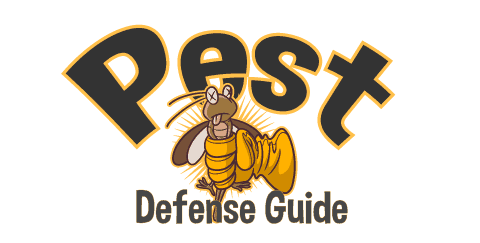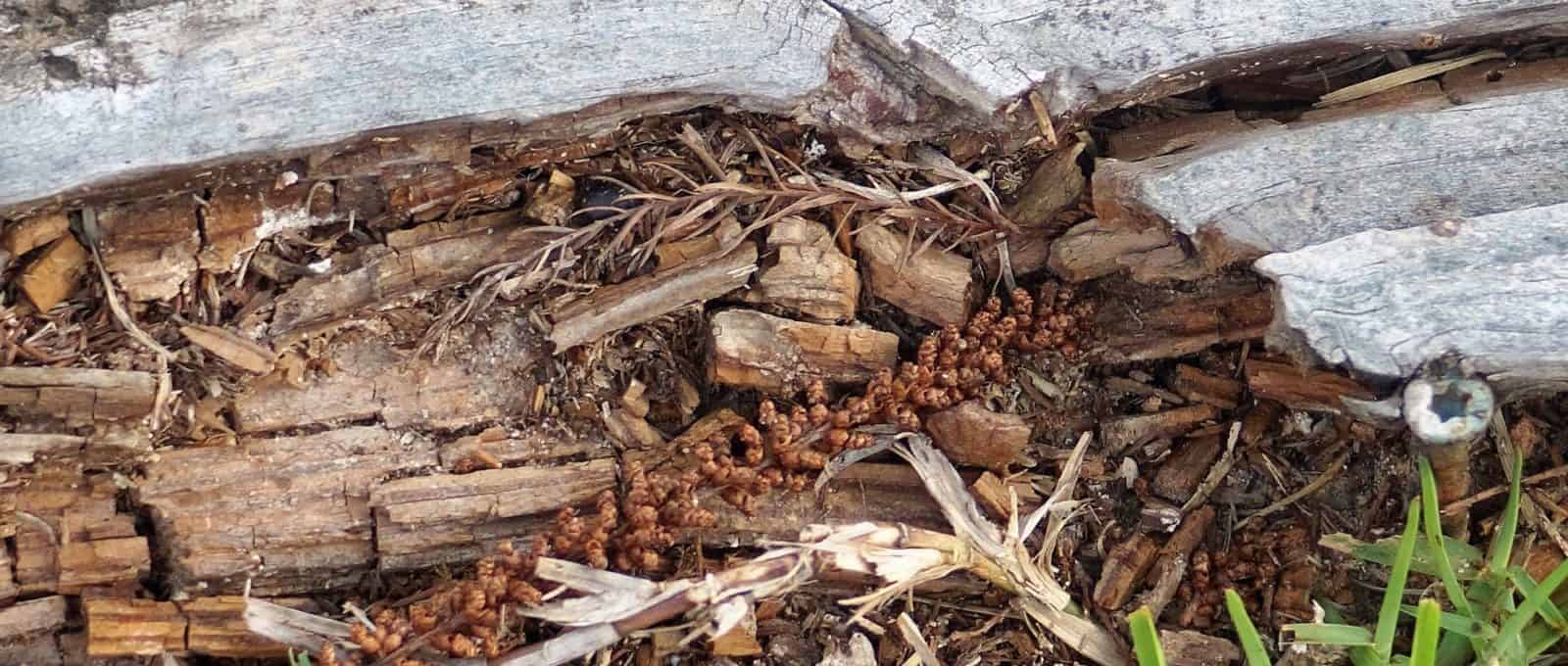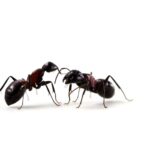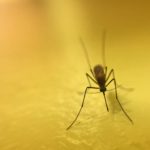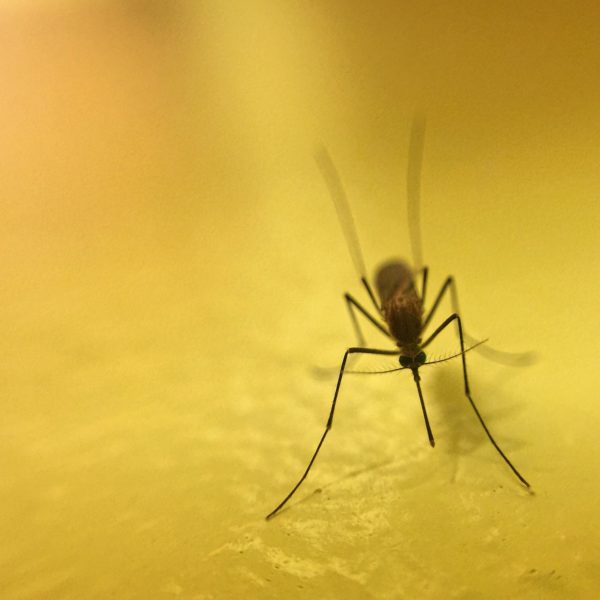How can you tell if you have termite damage and how can you get rid of them? https://varsitytermiteandpestcontrol.com/natural-ways-eliminating-termites/
Termites are tiny pests from the cockroach family that feed off wood. They are hard to detect, but their damage is unmistakable. Some people may first assume that a termite is a wood ant, but they are arent.
Research has shown that termites can do up to $5 billion dollars worth of property damage. A single termite colony can have up to $3 million members, and they move fast. Spring is usually when they make their first appearance, so it’s important to recognize the signs of early termite infestation so you can eliminate them before they cause any lasting damage.
Warning Signs of Termites
As small and pesky as they may be, there are a few noticeable signs that point to termites.
Odd Sounds
One of the most common signs of a termite infestation is the sound of clicking. This clicking is commonly referred to as “head banging”. This is because the soldier termites either shake their bodies or ram their head against the wood to signify danger. The termites called “workers” are extremely loud eaters. You can hear them chow down on the wood if you put your ear to the wall.
Fliers
In most cases of a termite infestation, the first sign is noticing flying termites. Flying termites, or swarmers, typically consists of a male or female looking for a mate to build a new termite colony.
A few species of flying termites are attracted to various sources of lights. Although some species may accumulate during the daytime, termites mostly swarm after a rainstorm. Another sign that you have termites is if you happen to find a pair of molted wings. This is because termites tend to lose their wings after they have found a suitable mate.
Tunnels
When a colony of termites has eaten their way through a good portion of wood, they leave small tunnels. These tunnels are very difficult to notice on the outside, but finding them is a sign that there is an infestation.
Doors and Windows Are Hard to Open
Termites produce a lot of moisture as they eat their way through door and window frames. As a result, opening and closing your windows and doors becomes more difficult, and they may feel “stuck” when you try to maneuver them.
Termite Droppings
Termite droppings, also known as frass, will be a telltale sign there are bugs about. Drywood termites produce these more than any other termite. Compared to their subterranean cousin, drywood termites push out their feces rather than use it to make their tunnels.
What are the most common types of termites?
“Termites” is a collective term that actually includes many different species. Each one functions and causes damage differently, so it’s important to know what to look for.
Drywood
Drywood termites are mostly found dry, humid places. As such, they can be found in New Mexico, Texas, Mississippi, Georgia, the southern areas of California and the entirety of Florida.
To make matters worse, there are actually multiple types of this one termite. These types include the West Indian drywood, the desert drywood and the Western drywood termite. As the name implies, drywood termites mainly go after anything that has wood, whether it’s a structure, floor or furniture.
Drywood termites are among some of the most difficult to get rid of because their ability to create multiple colonies in a short period of time. These termites are very rare in northern areas, gut their presence isn’t entirely unheard of.
Dampwood
This species of termites thrive in moist environments like Idaho, Oregon, Washington and the northern parts of Nevada. Dampwood termites are typically go after wood that is decaying or contains high volumes of moisture.
Dampwood termites have brown heads and a larger body than their counterparts. Most inland residential termite problems aren’t caused by dampwood termites due to their need of a water source.
Subterranean Species
Subterranean termites can be found just about everywhere in the US. Similar to drywood termites, there are multiple variations of subterranean termites. The exact type you might encounter depends on your geographic region.
How Can I Get Rid of Termites?
Although termite infestation quickly becomes overwhelming, elimination can be simple. To start, remove every possible food source. They may already be eating through your walls, but firewood and other sources of lumber are prime targets that will attract more pests.
The most common way to get rid of termites is using an insecticide spray. You can also use bait, flood soil and eliminate the primary food source by eradicated the mulch or relying on nematodes, which hunt termites.
Organic Methods
In addition, if you’re looking for organic ways to rid your home termites, there are non-toxic alternatives you can try. Vinegar is one of the safest ways to rid your home of termites.
Mix approximately half a cup white vinegar with lemon juice in a spray bottle and mist where you suspect you have termites. The acidic base of vinegar usually kills termites on contact, however, it’s important to respray the areas even if you think you’ve resolved issue. In addition, you also need to be aware that termites migrate, so they may move from one part of your home to another.
Orange oil may also be effective in ridding your home of termites. The main ingredient, D-limonene, causes the termites’ exosekeletons to dry up and eventually causes death. You can mist orange oil to in nooks corners, and crevices of your home to prevent further infestation.
Let the Sun
Direct exposure to sunlight is another way to kill termites. If you suspect infestation in your wooden furniture, move it outdoors to expose it to direct sunlight. Over time, the heat will either kill the termites or force them out of hiding.
If the termites are inside your home’s physical structures, like the supporting beams, you can try shining a strong UV light onto the area to produce the same effect as sunlight would.
Keep in mind that if you have termites in other areas or in other pieces of furniture, you still have to get to the root of the problem. Eliminating termites in one area will not eradicate them completely.
Borax Powder
When it comes to killing termites, Borax powder is also a powerful agent. You can use a spray bottle to mist the affected areas, or you can sprinkle Borax in the areas of infestation. If you choose to mist, remember that you’ll have to reapply frequently to all areas you think are infested.
When Should I Call an Exterminator?
A professional exterminator is the best option when it comes to eliminating a suspected termite infestation. Because termites can multiply so quickly, going the DIY route may not kill every remaining egg or insect.
The best way to ensure your home is termite-free is to have a professional fumigate the property. This requires you leaving your home for several days. Although this may be a mild inconvenience, it guarantees all pests will be killed and your home won’t suffer any further damages.
Prevention
It’s every homeowner’s responsibility to take the necessary steps for termite prevention. It can be a little overwhelming if this is your first time dealing with these pests. Luckily, termite prevention is easy.
Make sure to remove or seal any potential access points, keep their food source to a bare minimum, get rid of any extra moisture and look for any signs of termite activity.
To double your protection, always have a routine termite inspection by an exterminator. They’ll perform a thorough inspection of the area and look for any potential signs or termite damage.
Wrap Up
Termites can destroy a property in a matter of months. Calling an exterminator should be your first line of defense. Make sure to study the signs of termites to be certain that you have them. As a homeowner, it’s your responsibility to keep your home termite-free.
